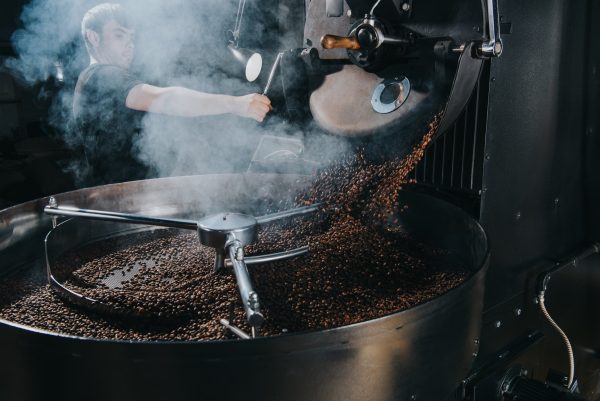
If you’re in the coffee business, good news!
According to research published by Reuters, the United States coffee market is stronger than ever.
Even as other types of caffeinated beverages have declined in the U.S., America’s love affair with coffee intensifies. The number of Americans who report drinking a daily cup of joe is the highest it’s been in six years.
As the industry booms, consumers’ expectations are on the rise, as well.
To stand out from competitors, it’s crucial that importers know how to roast coffee beans perfectly.
Leading the competition requires serious roasting skills. But, if yours aren’t all that they could be, we’re here to help.
Read on to learn how to roast coffee like a pro!
Roast Coffee to Perfection With These 9 Tips
Now is a great time to be a part of the American coffee industry. In 2017, the U.S. coffee market reached a whopping $18 billion dollars.
So, how can coffee importers claim their piece of the pie?
The secret to success lies in one’s ability to roast coffee to perfection.
Here are 9 tips to help you nail the art of coffee roasting.
1. Grow Your Knowledge of Green Coffee Beans
The first step in roasting great coffee is to find out everything you can about green coffee beans.
It’s essential for roasters to be able to know how to taste defective beans. Additionally, you should have a basic knowledge of coffee bean origins and be able to distinguish among beans’ unique tastes and varieties.
As a master roaster, you can never know too much about your product in its’ rawest form.
2. There’s No Substitute for Quality
Thanks to today’s technology, suppliers now have access to top of the line equipment. Even beginners can quickly learn to perform the roasting process.
But, no matter what type of equipment you use, high-quality coffee beans are a must.
3. The Big 4
There are four basic types of roasts that are used to categorize coffee. However, there is no industry standard that defines one from another. This means that there are often wide variations classified under one type.
The “Big 4” include the following:
- Light Roast
- Medium Roast
- Medium-Dark Roast
- Dark Roast
Light roasts are typically light brown and have a mild taste.
Since these beans are usually roasted for a shorter period of time than the other roasts, light roasts won’t have any oil on the surface. This is because the beans are not roasted long enough to crack, which releases the oil commonly seen among the others.
Medium roasts are darker than light roasts, but far from the darkest of the bunch. It’s sometimes referred to as the “American roast” because it’s often the preferred flavor in the United States.
Medium-dark roasts are rich in flavor and have a somewhat oily surface. This type usually has a mildly bitter aftertaste that distinguishes it from medium roasts.
Dark roasts are darker than the first 3 types mentioned above. Dark roasts tend to have an oily surface and a rich, bitter taste.
When buying coffee beans, dark roasts can range from slightly bitter to an almost burnt flavor. Be sure to ask your supplier or perform some research prior to making a purchasing decision so that you know what to expect.
4. Fresh Is Best
When you buy green coffee beans, you should always purchase the freshest beans possible. Green coffee beans can be stored for longer than older beans.
Importers should make sure that their beans are dry prior to roasting. But, don’t wait too long before roasting green coffee beans, as the beans won’t stay fresh forever.
Once beans are roasted, it’s best to use them shortly thereafter. The longer the beans sit, the greater the tendency to lose their fresh flavor. Over time, roasted beans can become dry and stale.
5. Listen for the Crack
During the roasting process, you should remember the following:
- 1 Crack=Good
- 2 Cracks or More=Not So Good
Shortly after you begin roasting your beans, you will hear a loud crack. This is normal and usually happens within the first several minutes of the roasting process. Once you hear the crack, you will need to check the beans at least once per minute to ensure that they don’t roast for too long.
If you happen to hear a second crack, there is a good chance that you’ve waited longer than you intended. Beyond the second crack, you may end up with a charred flavor.
6. Don’t Burn the Beans!
The right temperature is another must-have. Also, stirring the beans as the heat rises is recommended.
Fast roasting will result in a more concentrated flavor, but it’s also easier to burn beans when doing this.
All flavors can be achieved through slow-roasting, but the darker flavors will take longer. And, slow-roasted dark blends are slightly less concentrated than those achieved by fast-roasting.
It will probably take a few rounds of trial and error before you determine the perfect temps for your desired flavors. Beginner roasters should start with small batches just in case they experience less-desirable results.
7. Roasting Stages
Roasting brings out the flavor that is sealed inside the bean. The process causes chemical changes, which will quickly take place.
You will notice that the color of the beans change as they move from one stage to another throughout the roasting process.
You begin with green coffee beans, which then changes to yellow. Once yellow, coffee beans will change to brown.
The shade of brown will continue to deepen the longer that the beans roast. The darkest brown beans tend to have a more pronounced, bitter flavor, whereas the very light brown beans are usually accompanied by a light taste.
8. Choose Your Brew
Some roasters prefer to roast only for the bean. Others prefer the filter-extraction method. This method prepares beans for lighter tasting brews and is gentler than the espresso-extraction method.
Espresso beans are extracted with a 9 bar pressure, meaning there is a stronger flavor per ounce.
Today’s blends allow for a greater combination of brews. Espressos are generally dark, intense flavors. But, some of the newer espressos are light-roasted and taste much milder than the traditional espresso brews.
You will have to decide for yourself which brews you want to produce and market.
Of course, many people think of coffee roasting as a lifelong work of art that constantly evolves. As you learn more about the process and with practice, you might find that you enjoy creating both filter and espresso roasts.
9. Familiarize Yourself with Your Roaster
There are specialized roasters available, as well as roasters that accommodate a range of flavors.
Equipment can vary depending on the brand and its features.
Before you settle on a coffee roaster, be sure to compare several different ones. Find out how they differ from one another. You might even taste varieties produced by your top choices.
There are several additional factors that can influence one’s decision when buying equipment. For example, one might consider its capacity, its cost, or other factors. Sometimes, if you are on a budget, you may not be able to afford your top choice.
Luckily, with the right coffee beans and a careful process, you can produce delicious coffee even with less-advanced roasting equipment.
Looking for the Perfect Coffee Beans to Roast?
If you want the just-right beans to begin or improve your coffee-roasting career, you’ve come to the right place.
Our green coffee beans are among the freshest imported. Plus, they come from all around the world and are sourced only from highly-skilled farms.
When you roast coffee, the beans will be one of the things that determine your coffee’s flavor, taste, and quality the most.
Check out our coffees and make your selection today!
Common Questions
How long can green coffee beans be stored before they lose their freshness, and what’s the ideal timeframe for using roasted beans?
Green coffee beans can typically be stored for several months to a year when kept in proper conditions – cool, dry, and away from direct sunlight. However, for optimal freshness, it’s best to use them within 6-8 months of harvest. Once roasted, coffee beans begin to lose their flavor rapidly. For the best taste, roasted beans should ideally be used within 2-4 weeks of roasting. After about a month, even properly stored roasted beans will start to noticeably lose their flavor and aroma. To maintain freshness, store roasted beans in an airtight container at room temperature, away from light, heat, and moisture. For the freshest cup, it’s recommended to buy smaller quantities of roasted beans more frequently.
How long should I roast coffee beans to achieve different roast levels (light, medium, medium-dark, dark)?
The ideal roasting times for different roast levels vary depending on factors like bean type, batch size, and roasting equipment. Generally, light roasts are achieved within 6-8 minutes of roasting, just around the first crack. Medium roasts typically take 8-10 minutes, ending shortly after the first crack. Medium-dark roasts usually require 10-12 minutes, approaching but not quite reaching the second crack. Dark roasts often take 12-14 minutes, reaching or slightly surpassing the second crack. However, these times are approximate, and roasters should rely on visual cues, aroma, and sound (the “cracks”) rather than strictly timing to achieve their desired roast level.
What specific temperatures are recommended for different roasting methods (slow vs. fast roasting)?
The specific temperatures for different roasting methods can vary depending on the equipment and desired flavor profile. For slow roasting, temperatures typically range from 370°F to 540°F (188°C to 282°C), with the process taking 15-20 minutes. Fast roasting, on the other hand, usually employs higher temperatures between 460°F to 580°F (238°C to 304°C), with roasting times of 90 seconds to 5 minutes. Slow roasting at lower temperatures allows for more control and can develop complex flavors, while fast roasting at higher temperatures can produce more concentrated flavors but risks burning the beans. The exact temperature and duration should be adjusted based on the specific beans, desired roast level, and equipment being used.
